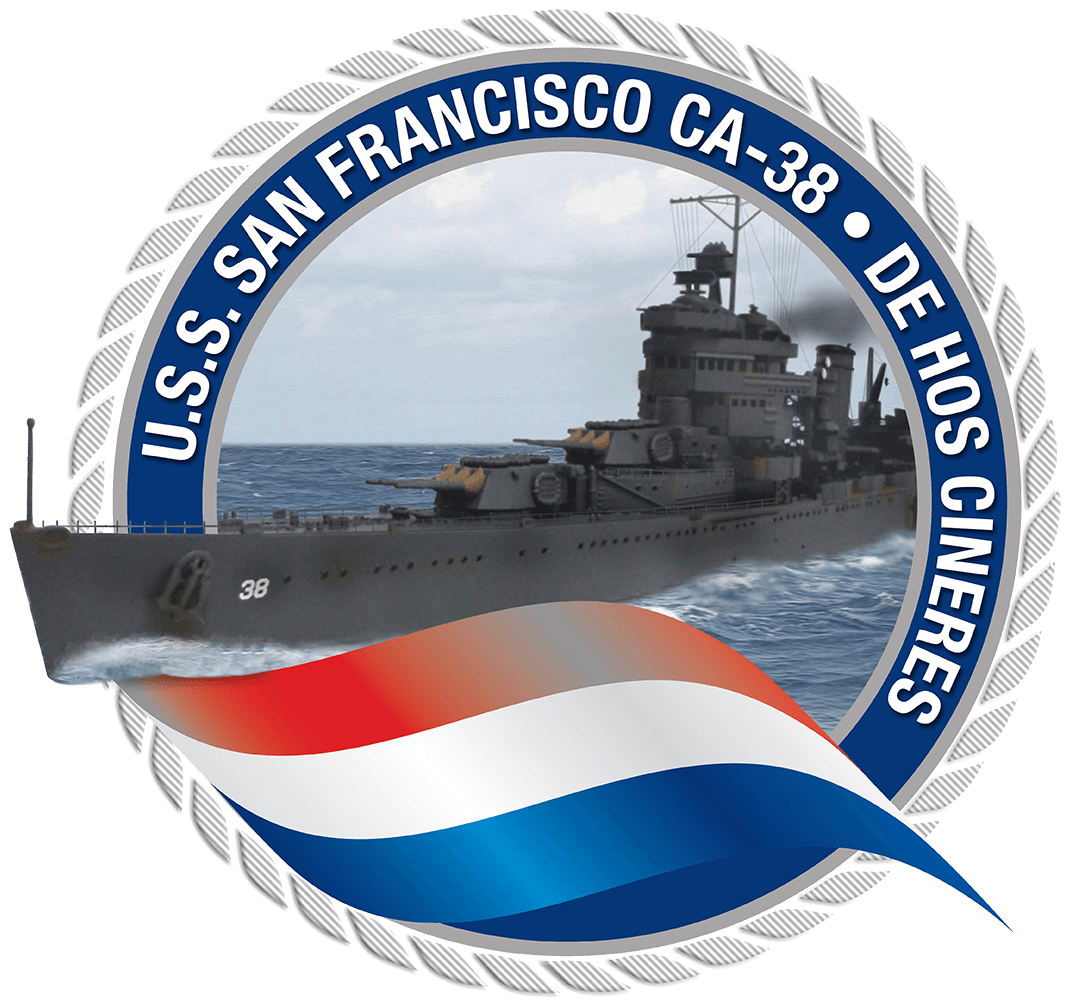Frank Slater, SN2 USN
“For extraordinary heroism as a gunner aboard the USS SAN FRANCISCO during action against enemy Japanese forces in the Solomon Islands area on November 12 and 13, 1942. Courageously refusing to abandon his gun in the face of an onrushing Japanese torpedo plane, SLATER, with cool determination and utter disregard for his own personal safety, kept blazing away until the hostile craft plunged out of the sky in a flaming dive and crashed on his station. His grim perseverance and relentless devotion to duty in the face of certain death were in keeping with the highest traditions of the United States Naval Service. He gallantly gave up his life in the defense of his country. ”
Frank Slater had hardly lived. The ship named for him experienced a life span more than twice the two score of the youthful native of Kennamer’s Cove, Alabama, who grew up at Fyffe in a sharecropping family — a family of nine children. A straight “A” scholar, he never had the opportunity to go to high school. This patriot saw his duty and enlisted in the United States Naval Reserve on Feb. 10, 1942. After Boot Camp, Second Class Seaman Slater was sent to Pearl Harbor Receiving Station where he was subsequently assigned to the USS SAN FRANCISCO. That was April 12, 1942. On November 12, 1942, Frank was killed when a Japanese aircraft he had shot down crashed into his gun position during the battle at Savo Island in the Solomons. He was buried at sea.
Patriotism to him was not just a word in a book. Frank Slater regarded patriotism as an act of unselfish devotion to country, of self-sacrifice for an ideal. His spirit lives on.
Family Christened Vessel
After several delays, the christening of the USS FRANK O. SLATER DE-766 was scheduled to be launched February 13, 1944, according to a report by John G. Chambers in the Fort Payne, Alabama, Times-Journal. Actual launch was delayed to February 20th. Fourteen members of the James Lafayette Slater family of Fyffe made the two-day trip to Tampa, Florida, for the christening and launching ceremonies. Only Pfc Thomas Slater, who was serving as an MP with the army in North Africa, could not attend.
J.D., the eldest of the Slater children, and Elam, who served aboard his brother’s namesake, reconstructed their journey.
“We went from Fyffe to Lookout Mountain in Cartersville, Georgia, where the three-car convoy headed south on U.S. 41. We spent the night in Valdosta, Georgia, then headed out the next morning early for our destination in Tampa. We will always be indebted to Ernest Lands, Jesse Whitmire and Bob Kennamer, who furnished and drove their own cars.
“We were poor sharecroppers tending a farm on ‘halves’,” recalled James David Slater. “Only after Frank’s death could our parents afford to buy their own homeplace, with the insurance money,” asserted Elam and J. D. Frank would have wanted it to be that way.
During an earlier visit to the Slater home, Mrs. James Lafayette Slater, a little bent but far from broken, led reporter Chambers, to the family well. She drew a fresh bucket of water and offered the newspaper people a cool drink from the dipper. Mrs. Slater, the former Nora Morgan, epitomized the rural Sand Mountain mother, and not to offer her visitors a drink from the well on such a hot day would be impolite.
A tall, thin, reserved lady, Mrs. Slater pointed to the well, asserting, “Frank helped to dig that well — there is where he wrote the date — it was written in wet cement. ” In Frank’s handwriting was ‘November 13, 1939’ — exactly three years before Mrs. Slater’s son was buried at sea
Elam Slater, Frank’s Brother, was one of the original crewmen on the USS Slater named for his brother. Elam served on the Slater the entire war and was a member of the 40mm Gun Crew.

